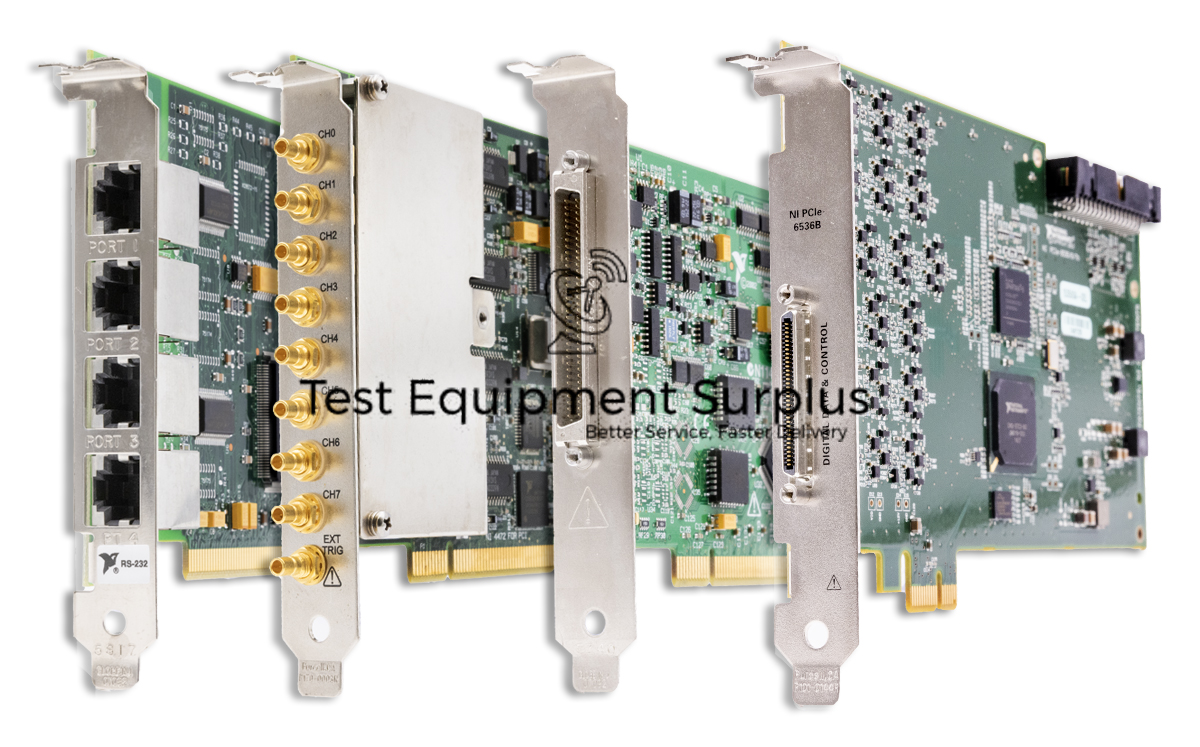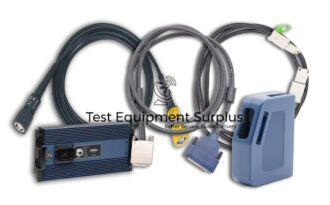Description
The PCIe-7820 is a Digital Reconfigurable I/O Device identified by part number 785361-01, equipped with a Kintex-7 160T FPGA, which features 128 bidirectional digital channels and four input channels. It supports external clock extraction and operates at a maximum clock rate of 80 MHz.
This device is adept for a range of applications including sensor simulation, waveform generation, and hardware in the loop (HIL) testing. Users have the flexibility of software control, ensuring adaptability for various requirements. The default voltage setting is 3.3 volts, compatible with LVTTL and LVCMOS logic families.
Each channel provides an output DC current of 4 mA and a sink current of 4 mA, along with an input impedance of 50 ohms. The device ensures precision with a minimum pulse width of 6.25 ns and a minimum sampling period of 5 ns, allowing for high-speed operations and accurate data capture.
| Specification | Detail |
|---|---|
| Part Number | PCIe-7820 |
| NI Part Number | 785361-01 |
| Type | Digital Reconfigurable I/O Device |
| FPGA | Kintex-7 160T |
| Digital Channels | 128 bidirectional |
| Input Channels | 4 |
| External Clock Extraction | Supported |
| Maximum Clock Rate | 80 MHz |
| Applications | Sensor simulation, waveform generation, HIL testing |
| Software Control | Supported |
| Default Voltage | 3.3 volts |
| Logic Families Compatibility | LVTTL, LVCMOS |
| Output DC Current (per channel) | 4 mA |
| Sink Current | 4 mA |
| Input Impedance | 50 ohms |
| Minimum Pulse Width | 6.25 ns |
| Minimum Sampling Period | 5 ns |
Question 1: What range of applications is the PCIe-7820, with part number 785361-01 and equipped with a Kintex-7 160T FPGA, designed to support, and what logic families is its default voltage of 3.3 volts compatible with?
Answer 1: The PCIe-7820 with part number 785361-01 and equipped with a Kintex-7 160T FPGA can ensure a minimum pulse width of 6.25 ns for precision operations.
Question 2: What are the key features and applications of the PCIe-7820 Digital Reconfigurable I/O Device, part number 785361-01, which is equipped with a Kintex-7 160T FPGA?
Answer 2: The PCIe-7820, with part number 785361-01 and equipped with a Kintex-7 160T FPGA, is designed to support applications such as sensor simulation, waveform generation, and hardware in the loop (HIL) testing, and its default voltage of 3.3 volts is compatible with LVTTL and LVCMOS logic families.
Question 3: What is the minimum pulse width that the PCIe-7820 with part number 785361-01 and equipped with a Kintex-7 160T FPGA can ensure for precision operations?
Answer 3: The PCIe-7820 Digital Reconfigurable I/O Device, part number 785361-01, equipped with a Kintex-7 160T FPGA, boasts key features such as 128 bidirectional digital channels, four input channels, external clock extraction, and an 80 MHz maximum clock rate. It is ideal for applications like sensor simulation, waveform generation, and hardware in the loop (HIL) testing. It also offers software control for flexibility, operates at a default voltage of
Question 4: What are the capabilities and specifications of the PCIe-7820 Digital Reconfigurable I/O Device, including its part number and the FPGA it is equipped with?
Answer 4: The PCIe-7820, equipped with a Kintex-7 160T FPGA and identified by part number 785361-01, is compatible with LVTTL and LVCMOS logic families due to its default voltage setting of 3.3 volts.
Question 5: What types of logic families is the PCIe-7820, equipped with a Kintex-7 160T FPGA and identified by part number 785361-01, compatible with due to its default voltage setting?
Answer 5: The PCIe-7820 Digital Reconfigurable I/O Device, with part number 785361-01, is equipped with a Kintex-7 160T FPGA and offers 128 bidirectional digital channels, four input channels, and external clock extraction, operating at a maximum clock rate of 80 MHz. It is suitable for sensor simulation, waveform generation, and hardware in the loop (HIL) testing, with software control for flexibility. The device operates at a default voltage of



